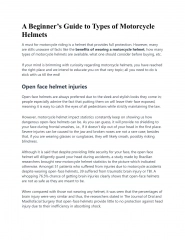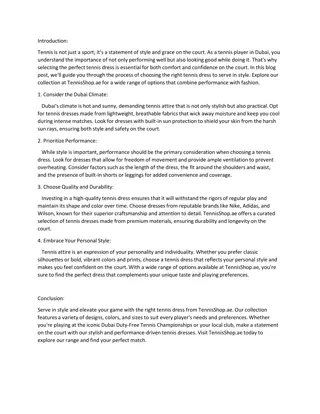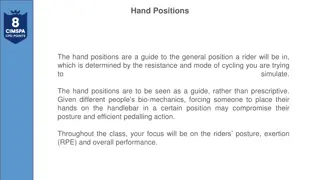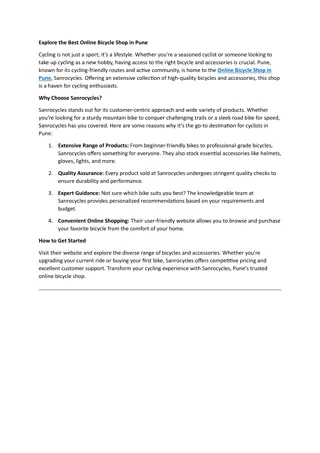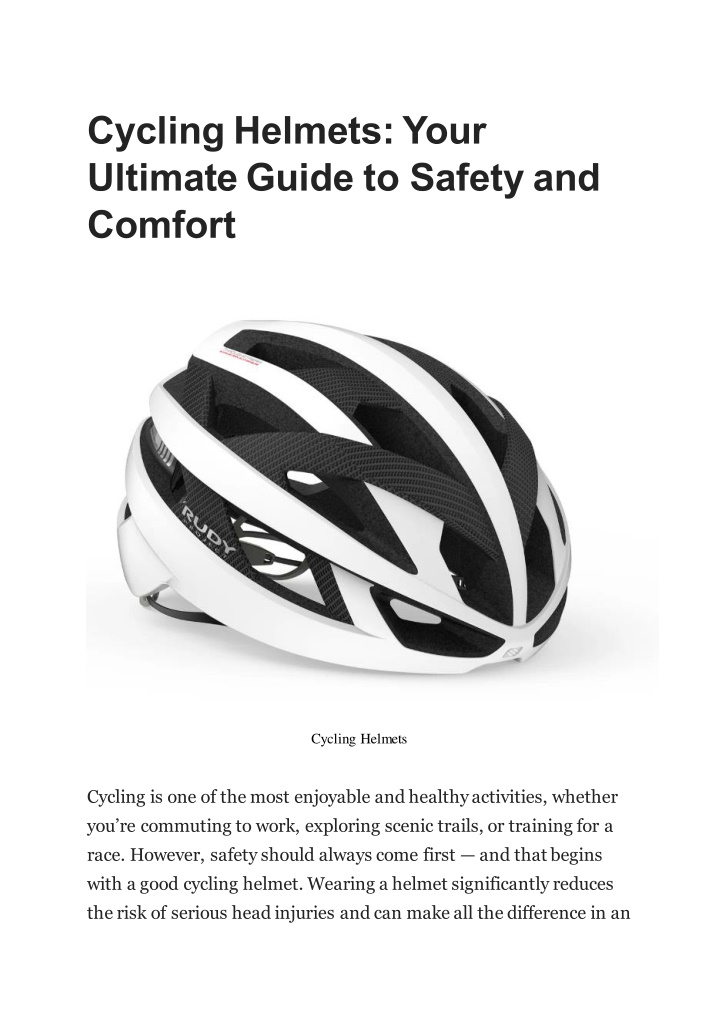
Choosing the Right Cycling Helmet: Safety, Comfort, and Style
A cycling helmet is essential for every rider, offering crucial protection, comfort, and style. Designed to absorb impact and reduce injuries, modern helmets come in various styles for road, mountain, and casual biking. Lightweight materials, ventila
Download Presentation

Please find below an Image/Link to download the presentation.
The content on the website is provided AS IS for your information and personal use only. It may not be sold, licensed, or shared on other websites without obtaining consent from the author. If you encounter any issues during the download, it is possible that the publisher has removed the file from their server.
You are allowed to download the files provided on this website for personal or commercial use, subject to the condition that they are used lawfully. All files are the property of their respective owners.
The content on the website is provided AS IS for your information and personal use only. It may not be sold, licensed, or shared on other websites without obtaining consent from the author.
E N D
Presentation Transcript
Cycling Helmets: Your Ultimate Guide to Safety and Comfort Cycling Helmets Cycling is one of the most enjoyable and healthy activities, whether you re commuting to work, exploring scenic trails, or training for a race. However, safety should always come first and that begins with a good cycling helmet. Wearing a helmet significantly reduces the risk of serious head injuries and can make all the difference in an
accident. Lets dive into why cycling helmets are important, how to choose the right one, and what features to look for. Why Are Cycling Helmets Important? The primary role of a cycling helmet is to protect your head during a crash or fall. Helmets are specially designed to absorb the impact energy and reduce the risk of skull fractures and brain injuries. Even a minor fall can have serious consequences without proper head protection. In many countries, wearing a helmet is legally required for certain age groups, but beyond regulations, it s a smart choice for every cyclist. Statistics show that helmets can reduce head injury risks by up to 85%. It s not just about safety either wearing a helmet also sets a positive example, especially for young or new riders, encouraging responsible cycling habits. Choosing the Right Cycling Helmet When it comes to selecting a helmet, there are several factors you should consider: Fit: A helmet should fit snugly without being too tight. It should sit level on your head and not tilt backward or forward. Most helmets come with adjustable straps and retention systems to fine-tune the fit. Type: Different styles suit different types of cycling. Road helmets are lightweight and aerodynamic, mountain bike
helmets offer more coverage and often have visors, and commuter helmets focus on comfort and style. Safety Certifications: Always check for safety standards like CPSC (in the U.S.), CE (in Europe), or AS/NZS (in Australia/New Zealand). These certifications ensure the helmet has passed rigorous testing. Ventilation: Good airflow helps keep you cool on hot days. Look for helmets with ample vents if you plan to ride in warm conditions. Weight: A lighter helmet is more comfortable for long rides. Advanced materials like polycarbonate shells and EPS foam cores help keep weight down without sacrificing safety. Additional Features: Some helmets come with extra features like MIPS (Multi-directional Impact Protection System) for added brain protection, integrated lights for visibility, and magnetic buckles for easy fastening. Maintaining Your Helmet A helmet s lifespan is usually about three to five years, even if it hasn t been involved in a crash. Exposure to sunlight, sweat, and general wear and tear can weaken the materials. Always replace your helmet after a significant impact, even if it looks fine externally, as its protective abilities may be compromised.
Clean your helmet regularly with mild soap and water, avoiding harsh chemicals that could damage it. Store it in a cool, dry place to extend its life. Final Thoughts A cycling helmet is not just a piece of gear; it s an essential part of every cyclist s kit. Investing in a quality helmet ensures you ride safer, more comfortably, and with greater peace of mind. Whether you re a beginner or a seasoned rider, never underestimate the importance of protecting your head. Gear up, stay safe, and enjoy the ride!

